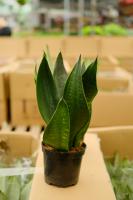Introduction
Tomatoes are a staple in many home gardens, but they can be difficult to grow if not properly supported. One of the most important aspects of growing healthy tomato plants is staking. In this article, we will discuss how to stake tomato plants after they have been planted.
Why Stake Tomato Plants?
Staking tomato plants has several benefits. Firstly, it helps support the weight of the plant and the developing fruit, preventing it from bending or breaking under its own weight. Secondly, it keeps the plant off the ground, which can prevent the fruit from rotting due to contact with the soil. Finally, staking can help increase air circulation, which can reduce the risk of disease.
When to Stake Tomato Plants?
Tomato plants should be staked as soon as possible after planting, usually within the first week. This allows you to train the plant to grow in a specific direction and will make it easier to tie the plant to the stake.
Choosing the Right Stakes
There are several different types of stakes that can be used to support tomato plants, including wooden stakes, metal stakes, and bamboo stakes. Wooden stakes are the most common, but metal stakes can be more durable and longer-lasting. Bamboo stakes are lightweight and can be easy to work with. Whatever type of stake you choose, make sure it is at least six feet tall and sturdy enough to support the weight of the plant.
How to Stake Tomato Plants
To stake tomato plants, start by gently pushing the stake into the ground about six inches away from the plant. Be careful not to damage the roots. Next, tie the stem of the plant to the stake using a soft, flexible material such as twine or cloth. Tie the stem loosely so that it has room to grow, but not so loosely that it flops over.
Alternate Staking Methods
In addition to traditional staking, there are several alternate methods that can be used to support tomato plants. One popular method is called the Florida Weave, which involves placing stakes on either side of the plants and then weaving twine in a figure-eight pattern between them. Another method is called the Cage Method, which involves placing a wire mesh cage around the plant to support it as it grows.
Conclusion
Staking tomato plants is an important aspect of growing healthy, productive plants. Whether you choose traditional staking with wooden or metal stakes, or an alternate method like the Florida Weave or Cage Method, the key is to provide support for the plant as it grows. With proper staking, you can enjoy a bountiful harvest of delicious tomatoes from your garden.

 how many times do yo...
how many times do yo... how many planted tre...
how many planted tre... how many pine trees ...
how many pine trees ... how many pecan trees...
how many pecan trees... how many plants comp...
how many plants comp... how many plants can ...
how many plants can ... how many plants and ...
how many plants and ... how many pepper plan...
how many pepper plan...






























